#17th century English
Explore tagged Tumblr posts
Text
Where did all those farmyard animal "The cow says Moo!" type of book come from? They came from this:
The Orbis Sensualium Pictus (the Illustrated Works of the Senses) by John Comenius, 1658 --> the first educational picture book for children.


#17th century English#childrens textbook#educational#17th century#illustrated book#children's book#what does the fox say#dogs used to grin not growl#children's Latin#illustrated alphabet#17th century alphabet#the ancestor of all those farmyard animal the cow says moo baby books
37 notes
·
View notes
Text
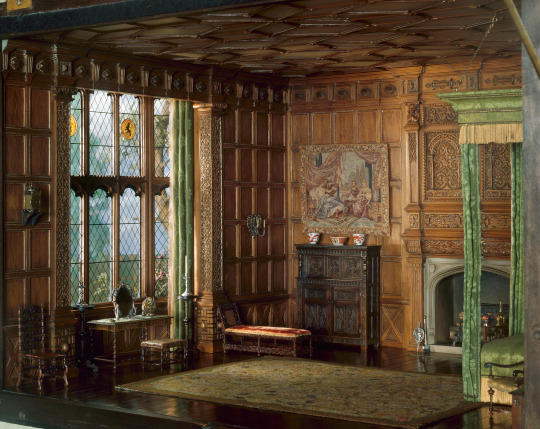

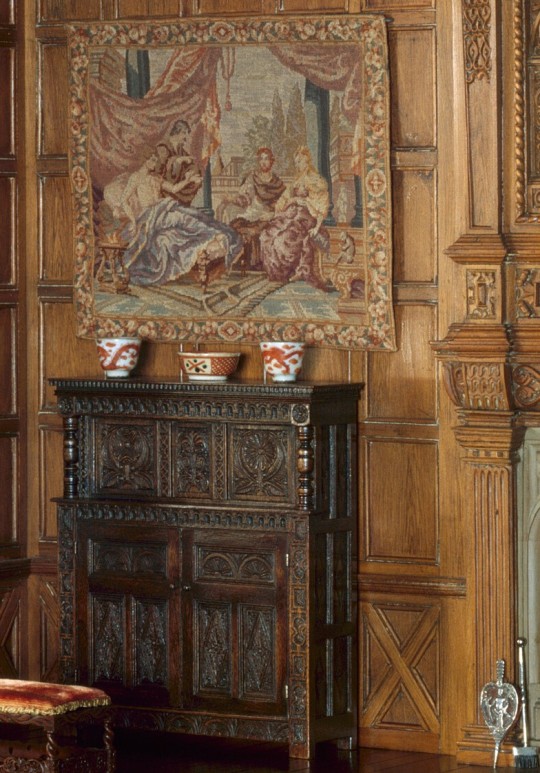
Miniature English Bedchamber of the Jacobean or Stuart Era, 1603-1688
Narcissa Niblack Thorne & Unknown Artisans
c.1937
Art Institute of Chicago (Reference Number: 1941.1187)
#miniature#miniature art#art history#architecture#interior design#17th century#united kingdom#english#jacobean era#stuart era#thorne rooms#art institute of chicago
2K notes
·
View notes
Text
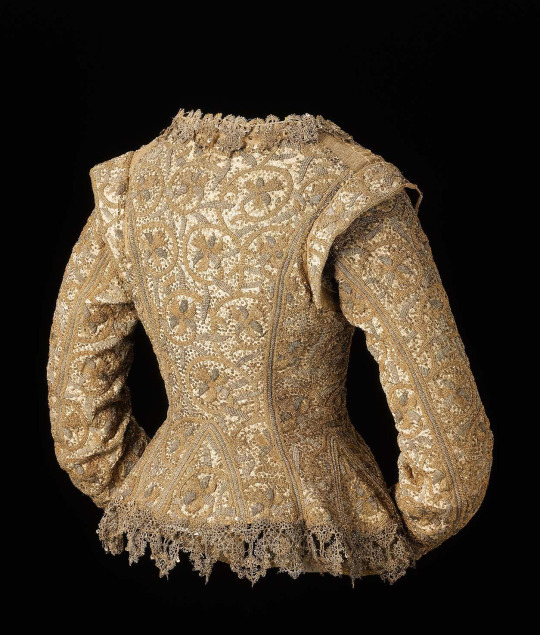
Woman's jacket, English. About 1610–15, with later alterations. Linen plain weave, embroidered with metallic threads and spangles; metallic bobbin lace. The Elizabeth Day McCormick Collection.
786 notes
·
View notes
Text

Peter Lely (1618-1680) "A Boy as a Shepherd" (c. 1658-1660) Oil on canvas Located in the Dulwich Picture Gallery, London, England
#paintings#art#artwork#genre painting#male portrait#peter lely#oil on canvas#fine art#dulwich picture gallery#museum#art gallery#dutch english artist#portrait of a boy#costume#costumes#musical instruments#flute#side profile#long hair#1650s#1660s#mid 1600s#mid 17th century
281 notes
·
View notes
Text

Probably Elizabeth Cary, née Tanfield by William Larkin, 1614-1618.
#classic art#painting#william larkin#english artist#17th century#portrait#female portrait#indoor portrait#fashion
56 notes
·
View notes
Text

An English Ship in Action with Barbary Vessels by Willem van de Velde the Younger (1633-1707)
130 notes
·
View notes
Text

Puppies
#Charles II#digital art#artists on tumblr#digital painting#art#my art#fanart#digital illustration#illustration#artwork#drawing#charles ii of england#stuarts#king charles iii#17th century#history#history art#english monarchy
147 notes
·
View notes
Text

196 notes
·
View notes
Text

Sir Robert Shirley (1581-1628)
Artist: Sir Anthony Van Dyck (Flemish, 1599-London)
Date: 1622
Medium: Oil on canvas
Collection: National Trust Collections, United Kingdom
Description
This fascinating portrait, dressed in Persian clothes, was painted in Rome in 1622. Robert Shirley was an adventurer, who from 1608 served as ambassador to the Persian shah Abbas the Great (1571–1629) and adopted Persian customs. Teresia Shirley was Circassian (people from the north-east shore of the Black Sea in Russia) and is shown seated demurely against a view of Rome. The painter, Sir Anthony van Dyck (1599–1641), may have been attracted to painting these sitters partly as a result of the stunning visual effect of their lavish clothes.
#portrait#full length#oil on canvas#sir robert shirley#persian clothes#flemish art#view of rome#man#oriental costume#turban#english traveler and adventurer#fine art#oil painting#artwork#sir anthony van dyck#flemish painter#european art#17th century painting#national trust collections
21 notes
·
View notes
Text

Barbara Villiers, Duchess of Cleveland (ca 1641-1709)
Artist: Sir Peter Lely (Dutch, 1618-80)
Date: c. 1663-1665
Medium: Oil on canvas
Collection: Royal Collection Trust, United Kingdom
Description
This picture forms one of the ‘Windsor Beauties’ series, a set of eleven portraits of celebrated women at the Restoration court painted by Sir Peter Lely. The series was commissioned by Anne Hyde, Duchess of York, probably around 1662-5.
Pepys recorded on 21 August 1668 that he ‘did first see the Duke of York’s room of pictures of some Maids of Honour, done by Lilly: Good, but not like.’ By describing the pictures as ‘not like’ Pepys is alluding to the often noted opinion that Lely flattered his subjects, and gave each portrait a similar languorous and ‘sleepy eyed’ air, said to have been influenced by the features of the noted court beauty Barbara Villiers, Duchess of Cleveland. Contrary to Pepys’s assertion, only one of the sitters, Frances Teresa Stuart, actually held the position of Maid of Honour in the Royal Household. Some of the others were noted courtesans, while others were respected members of the nobility.
Barbara Villiers was Charles II’s principal mistress between 1660 and 1670 and the most powerful woman at court until she was supplanted by Louise de Kéroualle.
#portrait#female#standing#gorgon's head#shield#costume#stormy skies#symbolism#goddess minerva#sir peter lely#dutch painter#windsor beauties series#maid of honor#barbara villiers#duchess of cleveland#english nobility#english culture#artwork#oil painting#oil on canvas#fine art#17th century painting#british history
20 notes
·
View notes
Text
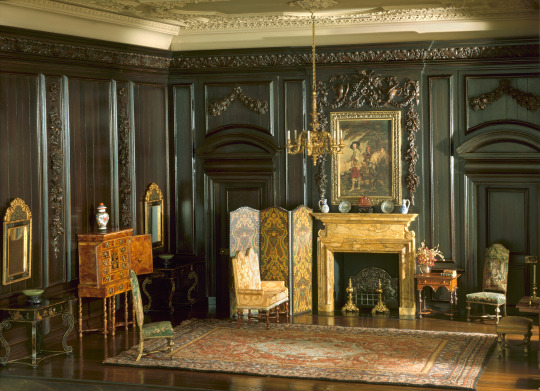

Miniature English Drawing Room of the Late Jacobean Period, 1680-1702
Narcissa Niblack Thorne & Unknown Artisans
c.1937
Art Institute of Chicago (Reference Number: 1941.1189)
#miniature#miniature art#art history#interior design#architecture#17th century#jacobean era#united kingdom#english#thorne rooms#art institute of chicago
491 notes
·
View notes
Text
The dangers of the combat zone

"Women accompanying the military were in what military historian John Lynn calls the combat zone, which is
best defined by the intensity and immediacy of danger and by the ability to do direct harm to the enemy… the full reality of war lives here. Modern armies regard it as an innovation to send some women into combat, but in the campaign community all women stood in harm’s way.
It would be odd to imagine that the women accompanying an army, exposed as they were to all the dangers of the military world, didn’t pick up arms and fight. In 1643, in the earlier stages of the English Civil War, a regiment of troops was recalled from Ireland to support King Charles. Rumours swirled that they were accompanied by a regiment of women, and that ‘these were weaponed too; and when these degenerate into cruelty, there are none more bloody’. Indeed, when 120 Irish women were taken prisoner at Nantwich they were discovered to have long knives with them, causing a furore in the press. The dubiously named True Informer excitedly reported that the knives in question were half a yard long, with a hook at the end ‘made not only to stab but to tear the flesh from the very bones’. The likeliest explanation for these knives, however, is that the women weren’t soldiers; they were camp followers, and they needed the knives to help them with pillage and self-defence.
The women of the campaign community did fight. The Bishop of Albi, on the battlefield of Leucate in southern France to administer to the dying in 1637, came upon the bodies of several women in uniform. ‘These were the real men,’ he was told by the Castilian soldiers, ‘since those who had fled, including certain officers, had conducted themselves like women’.
Madeleine Kintelberger was a vivandière accompanying the French Seventh Hussar Regiment at Austerlitz in 1805, along with her soldier husband and their six children. The regiment was under heavy attack from Russian forces when her husband was killed by a cannonball, and her children seriously wounded. Madeleine herself had taken a cannonball to the arm, virtually slicing it off below the shoulder. As the Russian Cossacks approached, she scooped up a sword to defend her children, receiving further wounds in both her arms before the family was taken prisoner. Madeleine was six months pregnant and gave birth in captivity. Her bravery was rewarded with a pension from Napoleon. Examples of cantinières fighting are ‘legion’."
Forgotten Warriors, Sarah Percy
#history#women in history#women's history#19th century#17th century#women warriors#warrior women#madeleine kintelberg#european history#historical figures#historical#france#franch history#england#english civil war#napoleoni
62 notes
·
View notes
Text

Peter Lely (1618-1680) "Sir Robert Worsley"
#paintings#art#artwork#genre painting#male portrait#peter lely#fine art#dutch english arist#portrait of a man#brown#clothing#clothes#long hair#1600s#17th century
136 notes
·
View notes
Text

Richard Sackville, 3rd Earl of Dorset by William Larkin, 1613.
#classic art#painting#william larkin#english artist#17th century#portrait#male portrait#indoor portrait#fashion
43 notes
·
View notes
Text
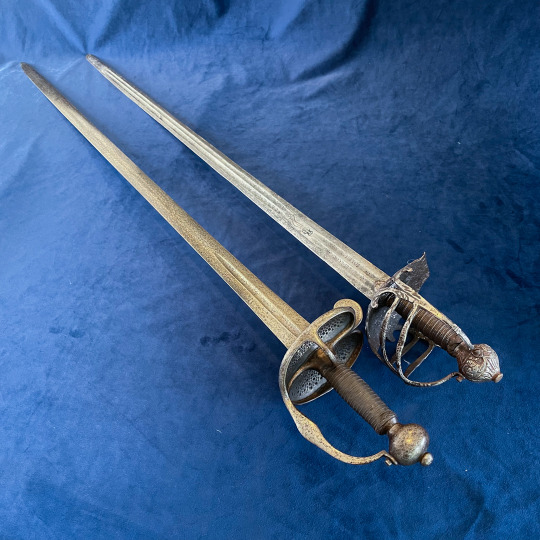


Study of two 17th Century swords; an English ‘mortuary sword’ and a Dutch ‘Walloon’ sword.

The mortuary sword was unique to British Isles and saw extensive use in the English Civil war.
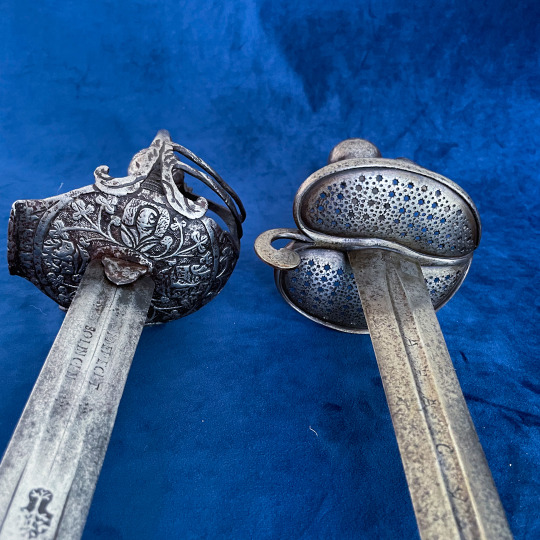
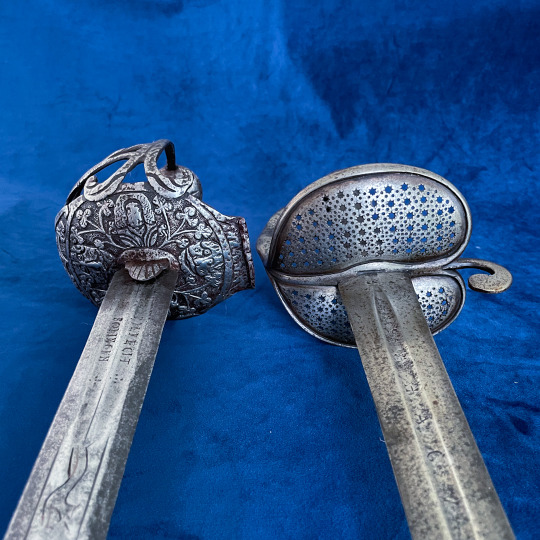
The walloon sword is believed to have originated in Germany and become popular during the 30 Years War that devastated the German States. It is characterised by an asymmetrical disk guard, thumb ring, a knuckle bow and side branches making a rudimentary basket hilt. The shells of the guard are often solid or pierced.
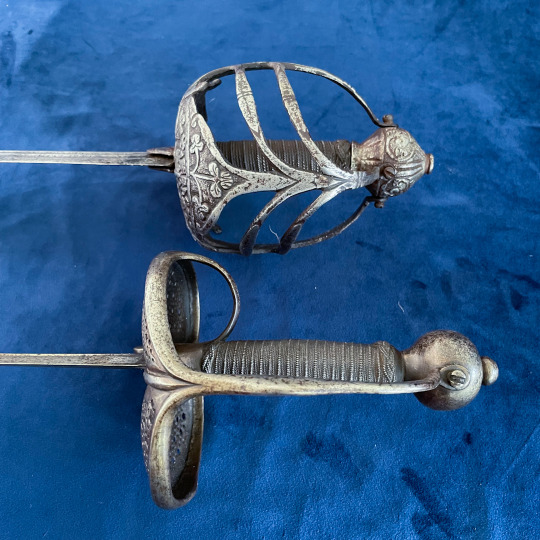

This sword is a later variant of the type and has dispensed with the side branches. The shell guards are separate pieces pressed into the outer rings. The ricasso is stamped with the Amsterdam coat of arms misleading early collectors into believing that they were for the Amsterdam town guard. However considering the number of this exact type survive, too many were made to just supply a city militia. Current thinking is that the stamp represents a quality control put on the imported blades (Solingen being the most likely source) before local cutlers mounted them with hilts.
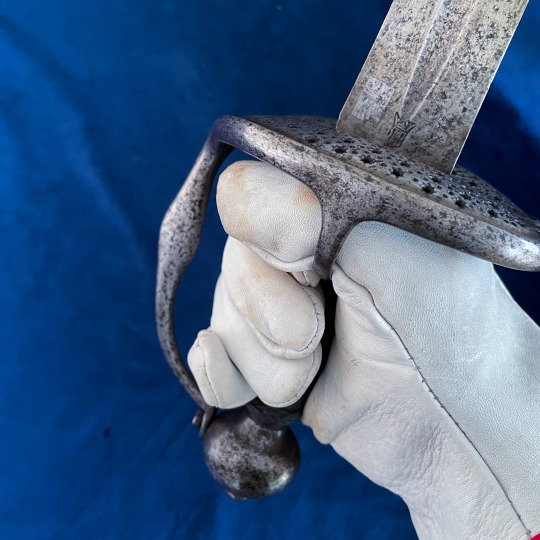
The term ‘walloon sword’ is believed to have come from the French who adopted a sword of this style in the late 17th Century or early 18th Cent. and called it the ‘epee de walloon.’

‘Mortuary sword’ is believed to have been coined in the late 19th Century with the exact reasoning behind the name unknown.
268 notes
·
View notes
Text
#MetalMonday:

Ostrich egg ewer
England (London), c.1675
Ostrich egg with silver gilt mounts
27.5 x 22.2 x 13cm (10 13/16 x 8 3/4 x 5 1/8in.)
On view at Museum of Fine Arts, Boston
#animals in art#european art#museum visit#birds in art#bird#ostrich#egg#ostrich egg#ewer#silver#metalwork#British art#English art#decorative arts#17th century art#Museum of Fine Arts Boston
62 notes
·
View notes